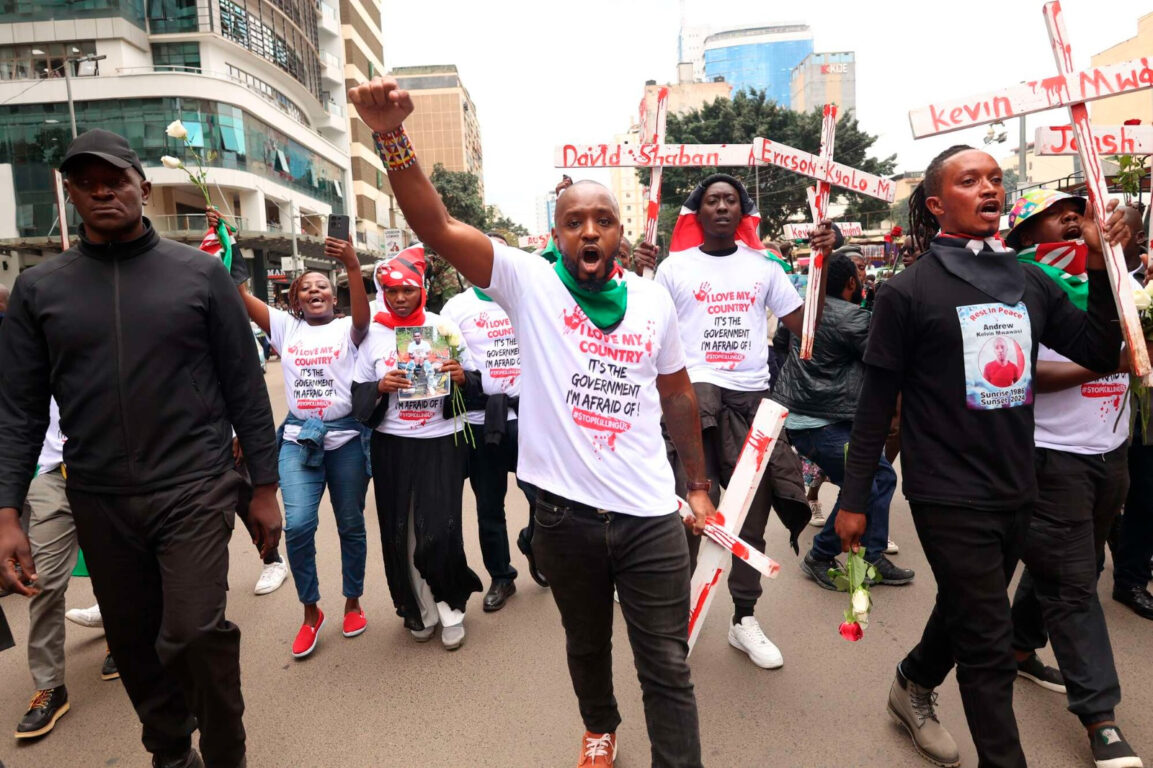Stan-Chart Marathon 2024: A Case Study of Political Interference in Corporate Events

The Standard Chartered (StanChart) Marathon has become an iconic annual event in Nairobi, attracting both professional and amateur athletes to compete for prize money. The organisers have also added interesting elements to attract families to take part. Corporations normally partner with StanChart to sponsor the event, with many paying for employees to participate as a team.
Given the turbulent political year in Kenya, activists could not help but grab the opportunity for civil protest. Boniface Mwangi, a well-known political activist, drew heavily from the playbook of international groups like Britain’s ‘Just Stop Oil’ to rally participants to #OccupyStanChart and protest against President William Ruto’s government by carrying flags and placards, wearing t-shirts with political messaging against the Head of State.
While his intention, as clearly stated in his call to action, was a peaceful protest, this would have turned the marathon into a typical Nairobi protest, posing a huge security risk to families with small children. The call brought about a heated debate online, with a number of citizens stating that it was not fair to turn a family-friendly corporate event into an unsafe one. Robert Alai, a Kenyan blogger and cyber activist who also serves as a Member of the County Assembly (MCA) for Nairobi County, was quick to write a letter to the Police asking them to intervene in the case and ensure public safety. The outcome led to Boniface’s arrest. He was held in a police station until the marathon was over and then released without charge.
Under Kenyan law, detaining someone without charge for the sole purpose of preventing their participation in a lawful event could infringe on their rights.
Article 29 of the Constitution speaks of the Right to Freedom and Security of the Person and protects individuals from arbitrary detention. It requires that arrests and detentions be justified with reasonable grounds. Holding someone without intent to charge, especially if they are not reasonably suspected of a crime, can be challenged as a violation of this right. Article 50 guarantees the right to a fair trial for anyone charged with an offence. While this might not directly apply to pre-charge detention, the spirit of this article emphasises procedural fairness, suggesting that holding someone without clear legal grounds undermines fair treatment by the law.
 The Right to Freedom of Assembly, Demonstration, and Petition (Article 37) in the Constitution also upholds the right to assemble, demonstrate, and petition peacefully. Obviously, a marathon is not a suitable place to exercise such a right, which brings us to the Limitation of Rights (Article 24), which states that while rights can be limited in cases where public safety or order is at risk, any limitation must be justifiable, reasonable, and necessary.
The Right to Freedom of Assembly, Demonstration, and Petition (Article 37) in the Constitution also upholds the right to assemble, demonstrate, and petition peacefully. Obviously, a marathon is not a suitable place to exercise such a right, which brings us to the Limitation of Rights (Article 24), which states that while rights can be limited in cases where public safety or order is at risk, any limitation must be justifiable, reasonable, and necessary.
The government and the police probably heavily relied on Article 24 to arrest Boniface, citing public safety. If he is to press charges, the question of whether he should have been arrested must be argued out in a court of law. What must be borne in mind is that whether he was right or wrong to call for #OccupyStanchart, there has been palpable public anger against the president and arresting a public activist does not bode well for both the government and the organisation in the court of public opinion.
StanChart is now treading a thin line in public brand perception. Are they guilty by association or actually guilty? Did they ask the police to intervene and arrest Boniface Mwangi, or did the police and the government do this of their own volition because they sensed that things might get out of control? Alai’s intervention was politically motivated, as his party formed part of President Ruto’s broad-based government. Unravelling the truth is not so easy, given that StanChart did not issue a statement of its own on the situation.
Corporations that align with the current administration face scrutiny as stakeholders and the public closely watch how businesses navigate the evolving political landscape. Regardless of their political stance, these organisations will encounter both support and criticism, depending on how their decisions resonate with the broader community.
Brands that hold events likely to attract political messaging, such as in the illustrated case, should proactively plan scenarios and develop crisis communication to respond quickly to political interference or public criticism. This includes identifying key spokespersons, clear messaging points, and predefined strategies for handling inquiries from both the media and the public.
More importantly, political interference often brings legal and reputational risks, so consulting with legal teams can help ensure compliance while protecting a brand’s autonomy. Public relations experts work with a brand to maintain its image and address any controversy thoughtfully and transparently, reducing the risk of backlash.
Openness to dialogue and constructive engagement with activists, communities, and governments is always the best way out. By framing interactions as collaborative and focused on mutually beneficial outcomes, the brand can demonstrate that it’s responsive to concerns without allowing any one party to control the narrative.
Strategic influencers can also be used tactically, as in 2023, when British race car driver Lewis Hamilton expressed support for ‘Just Stop Oil’ protestors as long as they did not jump onto the race track or perform dangerous stunts. This shows that Crisis management is hard to navigate but not impossible.

